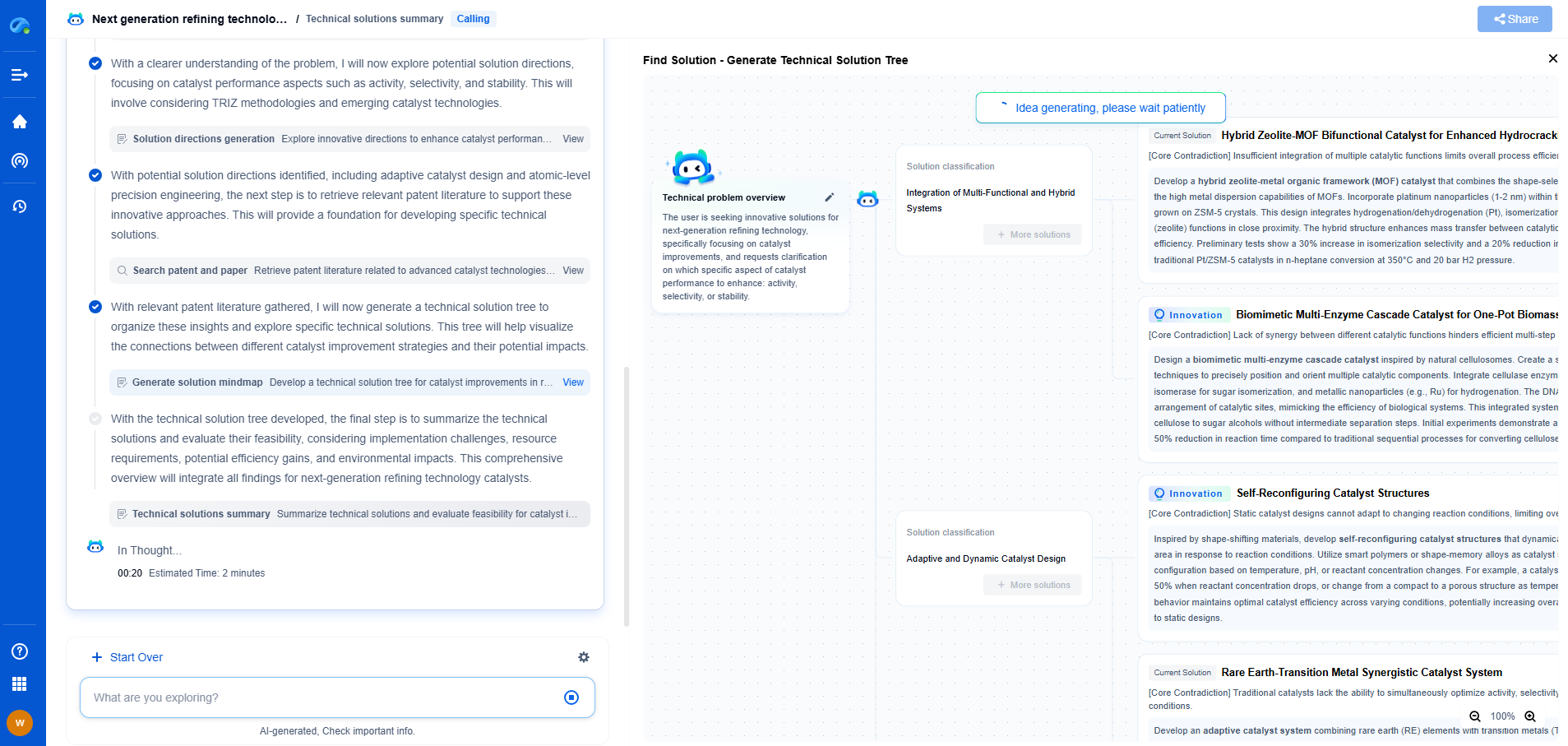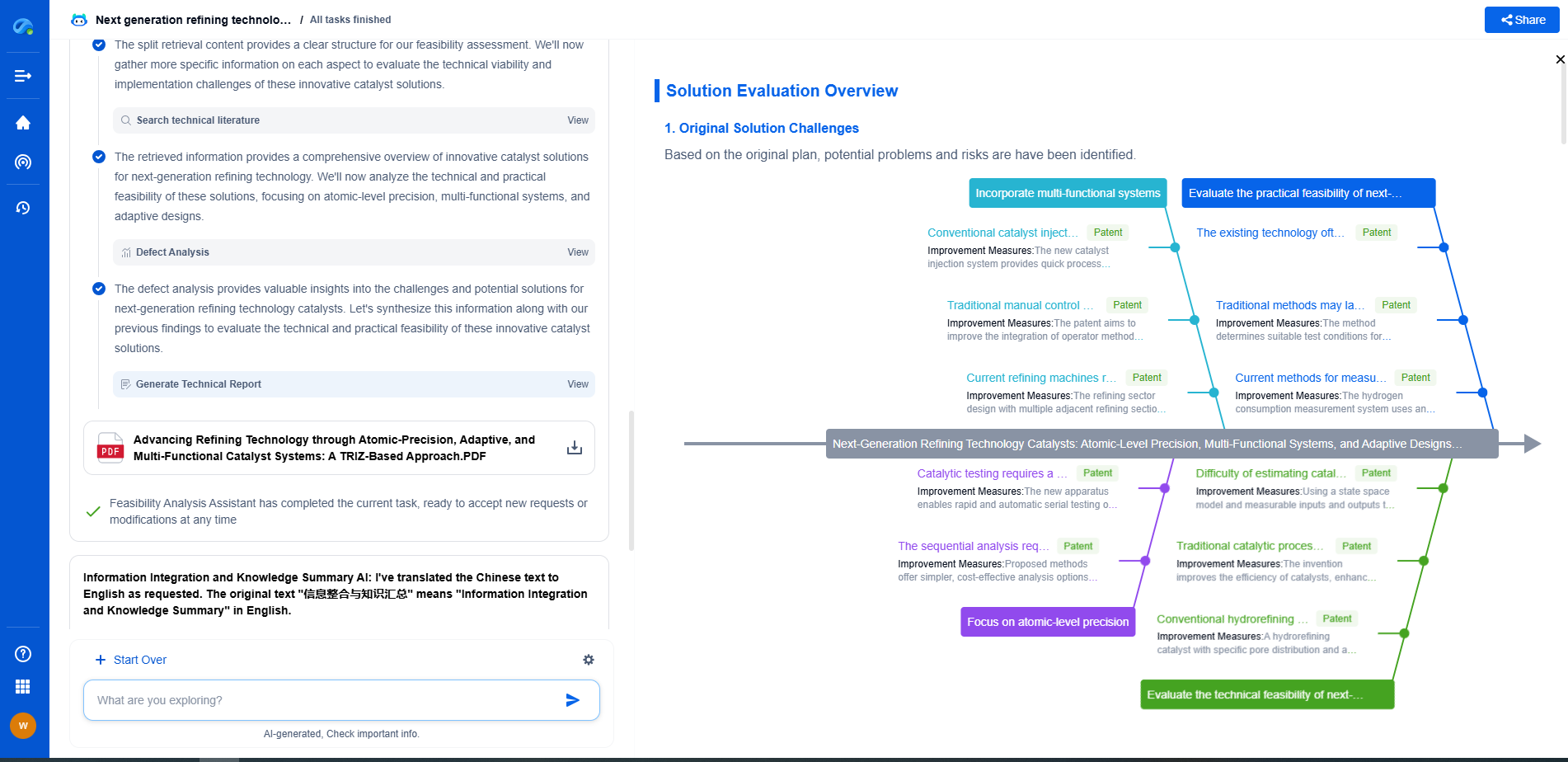Robotic Warehouse Batteries: Why LTO Outperforms NMC in 10,000-Cycle Demands
JUN 20, 2025 |
In recent years, robotic warehouses have become integral to modern logistics, offering unmatched efficiency and accuracy in handling inventory. However, the performance of these robotic systems heavily depends on the reliability and endurance of their battery technology. Two prominent battery chemistries often discussed in this context are Lithium Titanate (LTO) and Nickel Manganese Cobalt (NMC). Although both have their merits, LTO batteries consistently outperform NMC batteries, especially in high-cycle demand scenarios.
The Basics: LTO vs. NMC
Lithium Titanate (LTO) batteries are known for their stability and long lifespan. They feature a unique anode material—lithium titanate—that allows for faster charging and discharging, making them highly efficient under continuous use. On the other hand, Nickel Manganese Cobalt (NMC) batteries are popular for their high energy density, which makes them suitable for applications where space is limited and energy is paramount.
Cycle Life: The Crucial Factor
One of the most compelling reasons for the superiority of LTO batteries in warehouse robotics is their impressive cycle life. LTO batteries can last over 10,000 charge cycles without significant degradation. This endurance is vital in robotic warehouses where machines undergo frequent charging and discharging due to non-stop operations. NMC batteries, while offering good energy density, typically last between 1,000 to 2,000 cycles, which means they need replacement more frequently, increasing downtime and maintenance costs.
Fast Charging Capabilities
Robotic warehouse operations demand minimal downtime to maintain productivity, and here LTO batteries shine with their exceptional fast charging capabilities. They can be charged to 80% in as little as 10 minutes. This rapid turnaround is crucial in a 24/7 operational environment, ensuring that robots are back in action quickly and efficiently. NMC batteries, while capable of fast charging, often degrade faster if frequently charged at high rates, reducing their overall lifespan.
Safety and Thermal Stability
Safety is a paramount concern in any industrial setting, and LTO batteries offer superior thermal stability and safety compared to NMC batteries. LTO's thermal stability reduces the risk of overheating and potential thermal runaway, a critical consideration when robots operate in close proximity to humans and valuable inventory. This inherent safety reduces the risk of accidents and ensures compliance with stringent safety regulations.
Environmental Impact and Sustainability
Another advantage of LTO batteries is their relatively lower environmental impact. They are considered more environmentally friendly due to their longer lifespan and reduced frequency of disposal and replacement. This longevity not only contributes to sustainability but also aligns with corporate social responsibility goals that many companies now prioritize.
Cost Considerations
Although LTO batteries typically have a higher upfront cost compared to NMC batteries, their longer lifespan and reduced maintenance costs often result in a lower total cost of ownership over time. Companies benefit from fewer battery replacements, reduced downtime, and lower labor costs associated with maintenance, making LTO a more economically viable option in the long run.
Conclusion: The LTO Advantage in High-Demand Settings
In conclusion, while both LTO and NMC batteries have their place in the world of robotics, LTO batteries hold a distinct advantage in high-cycle demand environments like robotic warehouses. Their long cycle life, fast charging capabilities, superior safety, and lower environmental impact make them the ideal choice for businesses looking to optimize their warehouse operations. As technology continues to advance, it is clear that LTO batteries will play a pivotal role in shaping the future of robotic logistics, driving efficiency, and sustainability in equal measure.
Accelerate Breakthroughs in Fuel Cell and Battery Innovation—with the Power of AI
From solid-state battery breakthroughs to high-efficiency hydrogen fuel cells, keeping pace with fast-evolving chemistries, global patent landscapes, and emerging application pathways is an ever-growing challenge for R&D and IP professionals.
Patsnap Eureka, our intelligent AI assistant built for R&D professionals in high-tech sectors, empowers you with real-time expert-level analysis, technology roadmap exploration, and strategic mapping of core patents—all within a seamless, user-friendly interface.
Whether you're optimizing cathode formulations, evaluating electrolyte stability, or navigating the crowded patent space around battery pack design, Eureka empowers you to move faster and with greater confidence.
Start your journey with Patsnap Eureka today—streamline your research, enhance decision-making, and power the future of energy with AI-driven clarity.
- R&D
- Intellectual Property
- Life Sciences
- Materials
- Tech Scout
- Unparalleled Data Quality
- Higher Quality Content
- 60% Fewer Hallucinations
Browse by: Latest US Patents, China's latest patents, Technical Efficacy Thesaurus, Application Domain, Technology Topic, Popular Technical Reports.
© 2025 PatSnap. All rights reserved.Legal|Privacy policy|Modern Slavery Act Transparency Statement|Sitemap|About US| Contact US: help@patsnap.com

